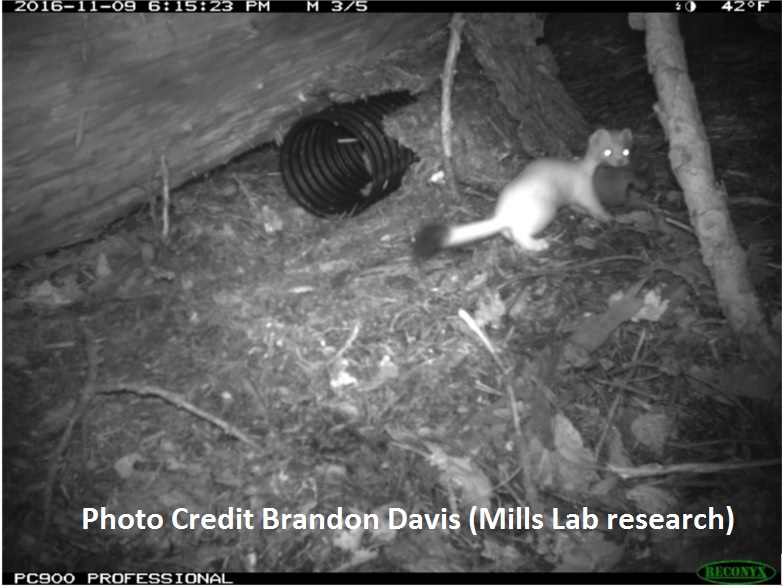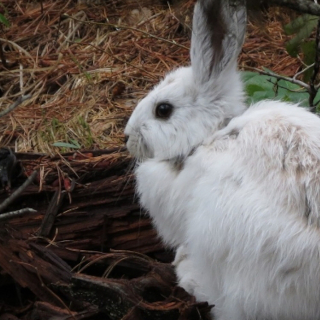MS student Brandon Davis introduces us to his main study species - the weasel

A Captivating Critter You May Know Nothing About!
Cunning, stealthy, ferocious, graceful. These are just a few adjectives used to describe weasels (Mustela sp.). Their small stature, inquisitive nature, and aggressive temperament place them among controversy. Opinions on weasels vary, but in the biological sense, there is something remarkably satisfying about a weasel. They are the ultimate carnivore; their size, shape, and behavior enable them to effectively hunt subnivean prey in places other predators can’t. Their sinuous body, long neck, and short legs are perfectly adapted for the hunt, allowing them to investigate every crack and crevice they encounter. They climb, burrow, swim, and move like lighting across logs on the forest floor. Even their Latin name, Mustela, which translates to “mouse spear”, invokes an aura of a ferocious hunter.
Fascination with weasels is nothing new. In medieval Europe and pre-colonial America, weasels were associated with power, purity, and wealth. Native American chiefs decorated their headdresses with winter white ermine skins, a symbol of power and luxury. In medieval Europe, white ermine furs were reserved for the elite, while the lower class had to make due with rabbit and cat fur. Even the great Leonardo da Vinci, painted a portrait that included a weasel, “Lady with an Ermine”.
Recently, weasels have been cast in both positive and negative lights. In London, an amateur photographer snapped a photo of a lifetime, a least weasel, earth’s smallest mammalian carnivore, attacking and riding a European green woodpecker in mid-air. Needless to say, the photo went viral. These same qualities that make weasels effective hunters are also the ones that make them a nuisance. In countries where weasels are introduced, they can exploit native prey. In some instances, this can lead to population decline. In New Zealand, where stoats, ferrets, and least weasels are invasive, managers spend millions of dollars each year to eradicate weasels. Even the highest-ranking official in New Zealand, the Prime Minister, recently vowed to eradicate all invasive species in New Zealand by 2050.
Because of their long, thin body type and hunting habits, weasels fill an interesting niche that is nearly worldwide. Being both predator and prey, weasels face unique challenges. Weasels insatiable appetite is partially due to their high metabolism, which requires them to eat five to six times a day. At the same time, weasels are small enough that they are vulnerable to a variety of mammalian and avian predators. As such, we are just beginning to uncover the mysteries that surround these captivating critters.
Brandon Davis, MS student

Lady with an Ermine

Winter white ermine pelts drape chief Two Moons headdress.
Featured image - A short-tailed weasel with a vole.
